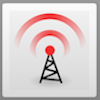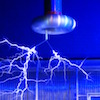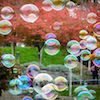Friday Flyer on Monday - November 23, 2020
There will be no Friday Flyer this coming Friday (November 27), as we'll be on Thanksgiving break. We'll pick it up again on December 4. Have a great Thanksgiving!

Spotlight on the University of Illinois at Chicago/Chicago State University QuarkNet Center
Mark Adams is the staff member who coordinates the QuarkNet cosmic ray program, and he is the mentor for the UIC center. Cosmic fellow extraordinaire Nate Unterman is also a member of this center, so it should be no surprise that its teachers and their students are very active in cosmic ray studies. You may recall the 2017 Cosmic Ray Solar Eclipse experiment; the UIC center was lead on that project. In 2019, Mark and Nate worked with students and teachers from six high schools to plan and carry out an experiment to measure cosmic ray rates in the MINOS tunnel at Fermilab as a function of distance from access shaft. This project, named MUSE (Muon Underground Shielding Experiment), resulted in several talks and posters presented by members of the collaboration at the 2020 AAPT Winter Meeting and an article that has been accepted to The Physics Teacher. You can check out slides from the AAPT presentations, including MUSE: The High School Muon Shielding Experiment, Facilitating the High School MUSE, Cosmic Ray Muon Rates Below Ground: Elevator Model, and Profiling Muon Flux in Fermilab's MINOS Tunnels. (These are large files, so you may need to download them in order to view the PDFs.)
When schools became inaccessible due to COVID-19 earlier this year, several teachers from this center brought their detectors home in order to continue collecting cosmic ray data. Mark and Nate have been collecting standard data sets for analysis in e-Lab for QuarkNet teachers who don't have a detector or currently can't access their detector.
The UIC summer workshop was held remotely on July 12–14 and both teachers and students attended. Participants performed analyses on the speed of muons and shower studies. An interesting "twist" happened on August 10, when one of Nate's detectors set up in a public space experienced a direct hit by a tornado causing the detector to lose power within 30 seconds of passing, while another nearby detector (~100 m) did not lose power. Students have been analyzing data from these detectors, looking for changes in muon rates due to the passage of the tornado or the associated front. According to Nate, the tornado was an EF1 and resulted in some minor damage to trees and property but thankfully no injuries or deaths.


News from QuarkNet Central
International Masterclasses came out with a circular on Friday to let us know about registration for IMC 2021 videoconferences. IMC begins today, accompanied by a second circular, showing all the links you need. Masterclass leaders, sign your QuarkNet center up by the December 7 deadline! The 2021 calendar has pushed IMC to an early start: February 11 at CERN and February 16 at Fermilab. You will need to lock in our videocon dates so you can be ready on time and deal with the uncertainties that will abound in the wake of 2020.
Our next QuarkNet Educational Discussions (QED) meeting is on Wednesday, December 9. This will be the final QED meeting in 2020!
The 2021 AAPT Winter Meeting will be a virtual meeting and will include 80 different session topics. Early bird registration is available through December 2, 2020.

Physics Experiment Roundup
Physicists working on neutrino experiments often display events as images, but composer David Ibbett uses "data sonification" to convert real scientific data into music. Get a sneak peek of Ibbett's MicroBooNE, a piece that will have its world premiere on December 8 at a virtual concert.
Construction at the underground facility in South Dakota for the Deep Underground Neutrino Experiment (DUNE) moves forward as the contract is awarded for excavation of the huge underground caverns that will house the detector there. The caverns are a mile underground, up to seven stories tall, and cover the area of two football fields.

Resources
How can you tell if a discovery is real? The folks at symmetry list six questions physicists ask when evaluating scientific claims. MarbleScience shares a video that explains Monte Carlo simulations using two fun examples (H/T to Marge Bardeen). From Fermilab, learn how particle physics just might save your life.
Is supersymmetry real? Don Lincoln addresses this question in his latest video of the Subatomic Stories series.
The Perimeter Institute will be hosting a live webcast on Wednesday, December 2, titled The Fascinating, Weird World of Quantum Matter with Karen Hallberg.

Just for Fun
The Physics of the Macy's Thanksgiving Day Parade Balloons from Wired, Thanksgiving Chemistry from Bytesize Science, 10 Thanksgiving Experiments from Raising da Vinci, and Turkey Races from STEAM Powered Family. Notice a theme? :-)
From all of us at QuarkNet, have a happy and safe Thanksgiving!
QuarkNet Staff:
Mark Adams: adams@fnal.gov
Ken Cecire: kcecire@nd.edu
Spencer Pasero: spasero@fnal.gov
Shane Wood: swood5@nd.edu
